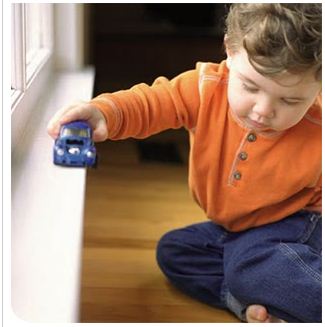Guest Blog: The Power of Therapeutic Play
By: Pamela Ullmann, ATR-BC, LCAT
copyright 2010. Pamela Ullmann.
This blog post has been reprinted with express permission of the author as it appeared on her on the Full Spectrum Blog

Children with Autism have many challenges with socialization and communication. They find it extremely difficult to relate to others; especially to their peers. Instead of playing with toys in imaginative ways (such as pretending a doll is really “my baby”) they may use toys for self-stimulation, perseverate on objects, and become entirely self-absorbed.
For typical children, play allows learning and social skills to build naturally. We usually do not have to “teach” children to play. However, a child on the spectrum may need some guidance. Play can be a great tool for helping children to go beyond autism’s self-absorption into a real and shared interaction. When directed properly, creative play can also help children explore their feelings and their environment. Eventually this can lead to stronger relationships with parents, siblings and peers.
Theories such as DIR/Floortime, a model created by Dr. Stanley Greenspan emphasize the use of play. The idea is to follow the child’s natural emotions and interests which he says is essential for learning and developing various parts of the mind and brain. In typical play therapy, clinicians are usually interested in letting the child take the lead. The therapist reflects back to the child their observations of what is happening in the session and mirrors back. Play Therapy with the Autistic child is a bit more challenging. We need to establish their functioning level and adapt to it. As stated above, they may not have the ability to play imaginative or symbolically. We need to be very animated and show them how to do this.
We may need to will get down on the floor with the child and truly engage him through the modality of play. For example, we might set out a number of toys that the child finds interesting, and allow them to decide what, if anything, interests her. If they pick up a toy car and run it back and forth without purpose, the therapist might pick up another car and place it in front of the child’s, blocking its path and saying “beep beep”. If the child responds — verbally or non-verbally — then a relationship has begun. If there is little reaction, the therapist might look for sensory or high-interest, options to engage the child. Bubble blowing is often successful, as are toys that are “cause and effect”- they can move, squeak, vibrate, and otherwise do something.
As the therapy builds, the therapist can build reciprocal skills, such as sharing, taking turns, and imaginative skills (pretending to feed a toy animal, cook pretend skills) and even abstract thinking skills (putting together puzzles, solving problems). Eventually, as the child becomes better able to relate to others, participating in a small group of peers would help further by engaging in more social play.
Featured Author: Pamela Ullmann, ATR-BC,LCAT
Many thanks to Pamela Ullmann for providing us with this article for our newsletter and website.
Pamela has worked in a variety of clinical, educational and business settings. Her passion for the arts led her to become an art therapist in 1996.
Pamela works therapeutically with children and families dealing with medical, emotional , behavioral and special needs issues (now specializing in Autism Spectrum Disorders). Currently, she is working as an art therapy supervisor for Heartsong, Inc, developing new programming for a new nonprofit organization called Healing Arts Family Connection, Inc and works in her own private practice, Colors of Play, LLC. Please support our contributing authors. Visit Pamela’s Blog, Full Spectrum at http://colorsofplay.blogspot.com/ and her website at: http://www.colorsofplay.com/
In addition to her clinical abilities, Pamela has developed administrative and managerial skills which has enabled her to contribute to all aspects of business planning and development.
PediaStaff is Hiring!
All JobsPediaStaff hires pediatric and school-based professionals nationwide for contract assignments of 2 to 12 months. We also help clinics, hospitals, schools, and home health agencies to find and hire these professionals directly. We work with Speech-Language Pathologists, Occupational and Physical Therapists, School Psychologists, and others in pediatric therapy and education.
